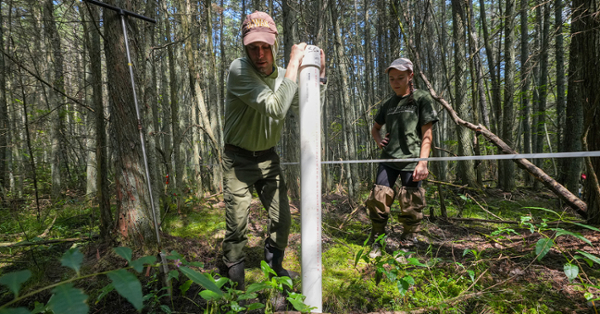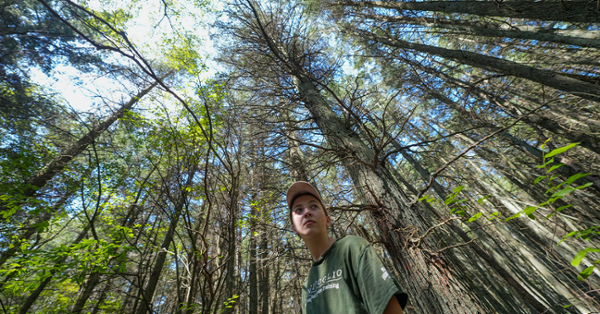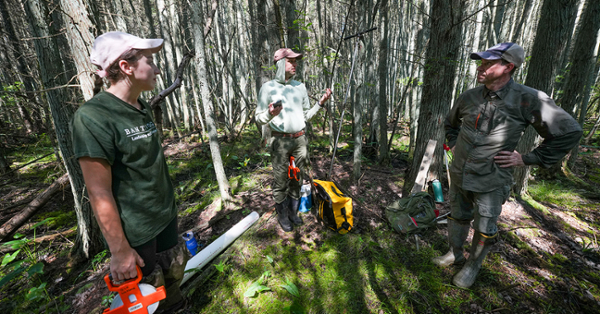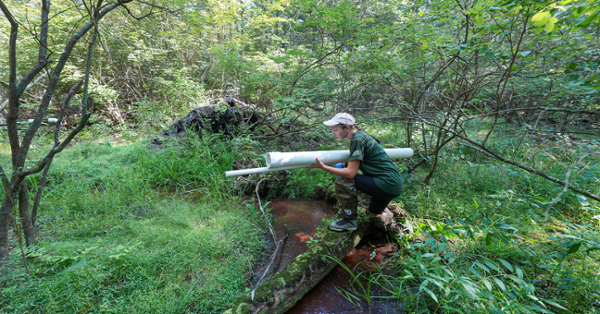Rowan scientists launch ambitious N.J. wetlands study to measure climate impact
Rowan scientists launch ambitious N.J. wetlands study to measure climate impact

In the heart of New Jersey’s Wharton State Forest, a team of Rowan University researchers led by Charles Schutte, Ph.D., and Lauren Kipp, Ph.D., in the School of Earth & Environment, is starting a two-year study to better understand how forested wetlands influence Earth’s climate.
The project, funded by a $360,000 grant from the New Jersey Department of Environmental Protection, aims to measure how much carbon these ecosystems bury—and how much methane they emit.
“In a nutshell, we’re trying to figure out whether these wetlands have a warming effect or a cooling effect on Earth’s atmosphere, and how strong that effect is,” said Schutte, an assistant professor in the Department of Environmental Science.
The study spans 12 sites across state lands, each equipped with flux chambers to measure greenhouse gas emissions from soil and tree stems. These chambers are sealed to the ground using water-filled collars to ensure accurate readings without disturbing the soil. Researchers will also install groundwater monitoring wells on each site, using PVC pipes to collect samples from varying depths.
The team is particularly interested in four types of forested wetlands: Atlantic White Cedar on Manahawkin soil, deciduous forests on Manahawkin and Atsion soils, and pine forests on Atsion soil. These combinations represent a range of conditions that could influence carbon burial and methane emission.
“Some types of wetlands are better at burying carbon, and some emit more methane,” Schutte explained. “Atlantic White Cedar forests are especially of interest. My guess is they emit less methane and bury more carbon than other forest types.”
Methane is a potent greenhouse gas—many times stronger than carbon dioxide. While wetlands are known for their ability to trap carbon in soil, they can also be significant sources of methane which is produced as bacteria break down dead plants and release the gas. Understanding the balance between the two processes is key to evaluating their net climate impact.
The study will also examine the role of soil type. Manahawkin soils, which are rich in organic muck up to four feet deep, are expected to store more carbon than sandier Atsion soils.
“There’s a really big stock of carbon in them that built up over time,” Schutte noted.
Kipp, who is also an assistant professor in Environmental Science, is leading efforts to measure radon in groundwater. Radon acts as a tracer that helps track water movement and the transport of dissolved greenhouse gases.
“This summer we’re establishing sites and installing wells to collect groundwater samples. In the fall, we hope to take our first measurements,” Kipp said.
The team will collect water samples four times per year for two years, analyzing them for dissolved greenhouse gases and other environmental indicators. They’ll also use a greenhouse gas analyzer to measure fluxes—how much gas moves from soil and water into the atmosphere over time.
Desiree “Desi” Bauer, a rising junior in Environmental Science, is assisting with the installation of groundwater wells and other fieldwork.
“This project gives us a chance to better understand such a huge portion of N.J. and how its geography affects, and hopefully improves, the climate,” Bauer said.
Ultimately, the researchers hope their findings will inform forest management strategies that enhance carbon burial and reduce methane emissions.
“If we can show there’s a big difference between Atlantic White Cedar wetlands and deciduous wetlands, it could support reforestation efforts,” Schutte said. “We used to have a lot more Atlantic White Cedar in New Jersey and restoring those forests might help us meet the state’s goal of reducing greenhouse gas emissions by 80 percent by 2050.”
The project is a collaboration between Rowan University, the Partnership for the Delaware Estuary, the USDA Natural Resources Conservation Service, and the NJDEP.
Said Schutte, “80% of New Jersey’s wetlands are actually forests. Hopefully, we’ll identify some ways that forest management can be used to have a climate cooling effect.”


